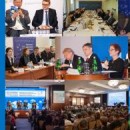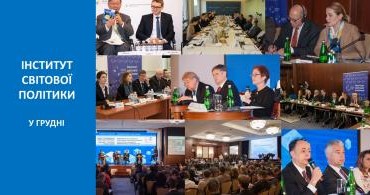Analytical article written by James Sherr, member of the Supervisory Board of the Institute of World Policy, Associate Fellow at the Royal Institute of International Affairs (Chatham House)The full publication Ukraine-NATO: Diagnosing the Partnership” is available here.
There is a consensus among the NATO member states on perception of the threats coming from Russia’s aggression. However, Ukraine should realize that the Alliance does not have the same level of certainty regarding providing Kyiv with membership. Instead of falling into the new wave of the “NATO-mania”, Ukrainian government should focus on implementing the real reforms in the field of security. Those reforms require neither accession to the Alliance, nor the Membership Action Plan.
A soft spot in Ukraine’s integration into NATO
There have been profoundly significant changes in the global political landscape since the seminal year 1997: the year in which the NATO-Ukraine Distinctive Partnership was concluded and the NATO-Ukraine Commission established. It was also the year in which the Russia-Ukraine State Treaty and three intergovernmental agreements on the Black Sea Fleet were signed. With these steps, Ukraine secured legally binding recognition of its territorial integrity, existing borders and sovereignty, including that part of its territory where Russia’s fleet was based. Whilst there was no official relationship between this cluster of agreements, the political linkage was clear. Boris Yeltsin sought to ‘keep Ukraine out of NATO’s embrace’ and believed this would be achieved by conciliation rather than threat. By conceding Ukraine’s most fundamental demands, he vindicated Leonid Kuchma’s ‘multi- vector policy’. He also demonstrated NATO’s importance as a means of regulating Russia’s relationship with its far weaker neighbour.
In those years both NATO and Ukraine were careful to distinguish between ‘deepening cooperation’ and membership. To Kuchma and Ukraine’s military establishment, the object of the multi-vector policy was to anchor Ukraine into the Euro- Atlantic system by stages and with Russia’s acquiescence. De facto integration was the goal. De jure integration, i.e. membership, risked imposing pressures on a new and weak state that it would not be able to withstand. This policy demonstrated cool judgement not only of Yeltsin’s Russia, but of Ukrainian public opinion and lines of division inside NATO.
By comparison, the Yushchenko years present a cautionary tale. Following the Orange Revolution, NATO membership was no longer subject to cost-benefit analysis. It became an end in itself. The judgement of a former head of the NATO Liaison Office in Kyiv is worth quoting: ‘the focus on MAP [Membership Action Plan] proved to be the Achilles’ heel of Ukraine’s westward integration policy’. The preoccupation with NATO in the years of Viktor Yushchenko’s presidency deepened established divisions across Ukraine and diverted energy and attention from the internal reforms demanded by the Maidan’s supporters. It showed a misunderstanding of NATO itself, which made no secret of its view that Ukraine’s highest security priority should be success in internal policy. By the end of 2006, Moscow concluded that the ‘Orange threat’ had crumbled. Putin’s Russia became revanchist in action as well as in spirit, and when it dismembered Georgia in August 2008, it provided a warning of what could happen elsewhere.
The difference between consensus and unanimity in the NATO
The times we live in now are the product of the times that existed then. Those who make NATO policy and guide it are burdened by this recent history and still struggle to absorb its lessons. Those who ignore them will do so at their peril and endanger others. The differences (and similarities) between Putin’s Russia and Yeltsin’s Russia should have been known well before 2008, but hopefulness was more appealing and comfortable than realism. The architects of the US-Russia ‘reset’ (and its European analogues) after 2008 did not welcome health warnings and, after Crimea’s annexation in March 2014, they pretended that none were given.
It is well understood that NATO makes decisions by consensus. But inside NATO the distinction between consensus and unanimity is also understood. The admission of any member state requires unanimity. If Greece under the leadership of Syriza is sufficiently determined to block Ukraine’s membership, it can do so, But other decisions, including many vital to Ukraine’s future, require consensus: the agreement of a preponderant majority of stakeholders with a direct and active interest. These include joint planning, coordination and operational level collaboration.
Still other decisions fall within the prerogatives of individual members. Neither Lithuania nor the United States require agreement of the NATO Council to provide military assistance to Ukraine, lethal or non-lethal. These are national decisions.
Today there is a robust Alliance consensus on several key points:
Russia is pursuing a war of aggression against Ukraine in violation of its treaty obligations and the conventions and agreements that underpin the post-Cold War security order; Its military intervention constitutes a mortal threat to Ukraine and a significant threat to Europe as we know it and wish to preserve it;
• The conflict poses dangers that are systemic in character. Vladimir Putin cannot afford to lose in Ukraine, yet he cannot be allowed to win. An escalation of hostilities beyond Ukraine cannot be ruled out;
• In response, NATO must bring the tools and techniques of deterrence into conformity with ‘new generation’ requirements, including ‘informational struggle’ and ‘hybrid warfare’ scenarios in vulnerable states susceptible to penetration, provocation and subversion;
• Deterrence and defence in Europe as a whole will prove significantly more difficult if Russia achieves its objectives in Ukraine. For this reason, all feasible steps must be taken to prevent Ukraine’s territorial disintegration or its descent into chaos;
• The ‘Russia challenge’ is likely to be long-term. Success and a sustainable political settlement will demand firmness, wisdom and patience.
So long as this consensus endures, dissenters inside NATO (whether they be states or networks within states) will be marginalised and constrained. Yet such dissenters do exist, and they are well credentialed and vocal. A failure by Ukraine to meet general Alliance expectations – capable national leadership, internal reform and fidelity to European values – will strengthen their credibility and influence. For this reason if none other, even its most dedicated supporters believe that Ukraine must shoulder the principal burden of its own defence and the preservation of its hard won democratic freedoms.
On one vital issue, there is little consensus or none: providing Ukraine with the tools to defend itself. At the humanitarian level, the supply of military assistance ruffles no feathers. Supply of food ration packs, winter clothing, durable footwear and uniforms is not a subject of discord. Even the provision of advisory groups and training arouses little controversy, particularly when such assistance is provided under a national rather than a NATO flag.
But how does one distinguish between ‘assistance’ and ‘arms’? Secure communications are not arms, yet even a well-armed force can be annihilated without them. Infrared sites, night vision goggles, counter-battery radar and counter-battery strikes all serve the same purpose: to protect one’s forces and defeat the enemy. Because these distinctions are easily blurred, lines of argument are also blurred.
NATO should provide Ukraine with “as much assistance, as it can swallow”
It is easy to forget that armament, like war, is a tool of policy. What is our political objective? To many, including the present author, it is to deter further Russian aggression, render the existing occupation regime untenable and create, by stages, a political solution that restores Ukraine’s territorial and constitutional integrity. To these ends, a structure of deterrence must be established inside Ukraine and not only on its western borders.
For many proponents of arming Ukraine, principle as well as policy is involved. The right of a state to bear arms and purchase them is an inalienable attribute of sovereignty. Yet even some who dispute this principle’s universality nonetheless argue that without a credible threat to arm Ukraine, there can be no credible diplomacy. This view has latterly been advanced by Wolfgang Ischinger, perhaps Germany’s most distinguished Russlands Versteher.
The opponents of arming Ukraine are also diverse. They include those, like Angela Merkel, who are determined that Russia fail, yet believe that sanctions offer the best hope of achieving this end. Nevertheless she, like President Obama, also harbours the apprehension that armament will produce escalation, rather than deterrence, and open the path to war between Russia and NATO.
The danger of a NATO-Russia conflict has been present since Russia annexed Crimea. It is intrinsic to the present conflict and the Kremlin’s febrile view of the world. Western ‘reasonableness’ will not diminish it. Hints to the effect (in Lavrov’s words) that ‘Moldova and the Baltic states need to consider events in Ukraine and draw conclusions’ underscore the wider significance of what is taking place.
Psychologically, Russia is already in a state of war with NATO. By strengthening deterrence in the Baltic States, NATO is acknowledging this fact, as well as the Roman axiom: ‘if you want peace, prepare for war’. Yet inside NATO member states no war fever exists, and there is no appetite for one.
NATO’s cohesion derives from the interests and values that unite its members. Yet NATO is a security organisation, not an ethical project. No state will be invited into the Alliance unless it is clear that its membership will strengthen NATO’s security as well as its own. In present or readily foreseeable conditions, Ukraine’s membership would not meet this requirement. It would confront the Alliance with the immediacy of an Article 5 situation and a palpable risk of nuclear war. It is beyond common sense to imagine that an Alliance divided about the merits of arming Ukraine would unite in favour of Ukrainian membership.
But if membership is not possible in today’s conditions, it also is not necessary. NATO and Ukraine share a common strategic interest in denying Russia the fruits of aggression, supporting Ukraine’s recovery and restoring its sovereignty throughout its territory. To these ends, NATO and Ukraine must establish a structure of containment and deterrence inside the country (and not only on its western border); they must work together to reform Ukraine’s defences and improve them, and ensure that Ukraine is provided (in Yeltsin’s celebrated words) with ‘as much assistance as it can swallow’. Neither MAP nor membership are required to accomplish these goals. A fresh round of NATO mania in Ukraine will only divert attention from these challenges and weaken the consensus that currently exists.




Comments theme
Comments themeComments themeComments themeComments themeComments themeComments themeComments themeComments themeComments themeComments themeComments themeComments themeComments themeComments themeComments themeComments themeComments themeComments themeComments themeComments.